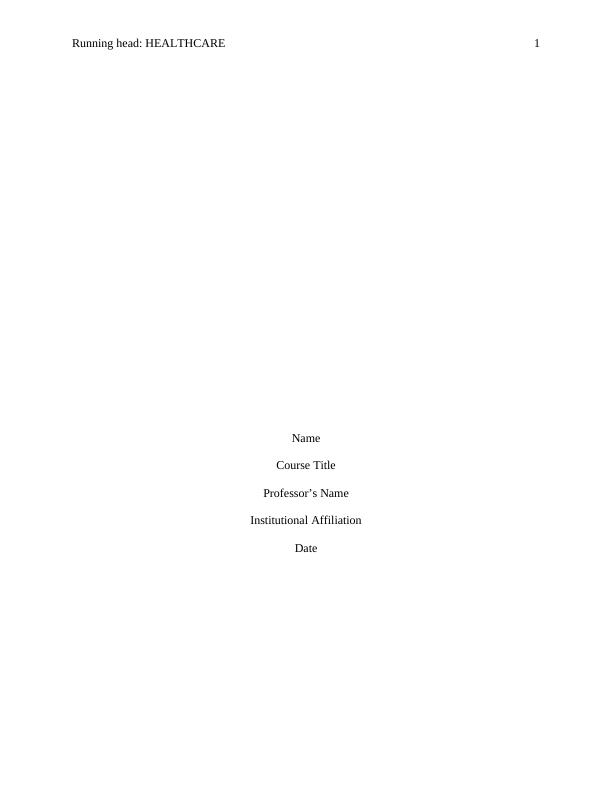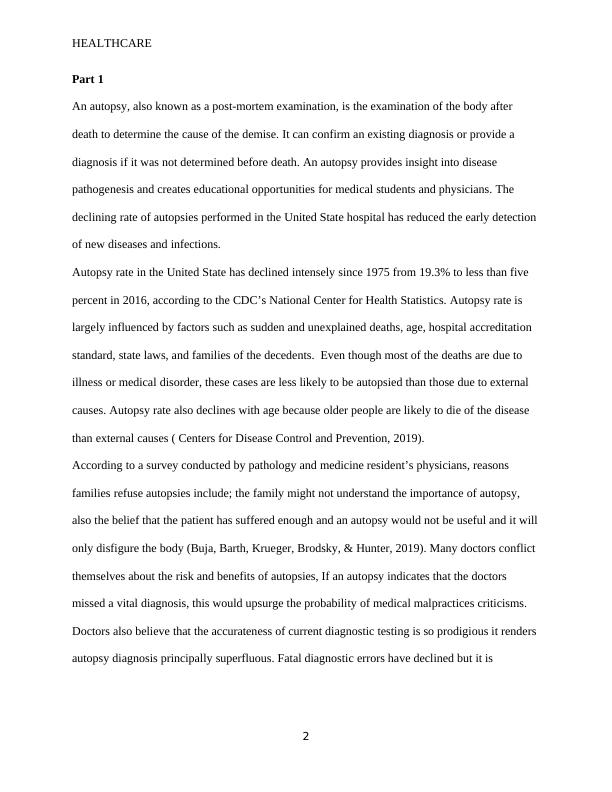Autopsy and its Declining Rate in the United States
5 Pages1206 Words186 Views
Added on 2022-11-29
About This Document
This article discusses the declining rate of autopsies in the United States and its impact on disease detection and medical education. It explores the reasons for the decline and highlights the importance of autopsies in improving healthcare.
Autopsy and its Declining Rate in the United States
Added on 2022-11-29
ShareRelated Documents
End of preview
Want to access all the pages? Upload your documents or become a member.
Advocacy Through Legislation - Article
|8
|2298
|19
Doctor's Dilemma - A Case Study
|7
|1202
|322
Old age Patient Nursing Case study 2022
|10
|2025
|17
Assignment on Public Health Issue
|3
|403
|17
IMPROVE HAND HYGEINE 3 3 Running Head: RESEARCH PROPOSAL TO IMPROVE HAND HYGEINE HLSC 2P27 Research Methods in Health Health Research Proposal Winter 2020 Dr CE Pietrangeli PhD HRP Instructions and Gr
|11
|3203
|21
Hospital Acquired Infections: Definition, Incidence, Consequences and Nursing Strategies
|9
|2119
|497


